See the data behind Google’s rising search feature, AI Overviews, including how AIOs are impacting CTR and user experience.
In 2024, Google launched AI Overviews (AIOs), a search engine results page (SERP) feature that uses AI to generate answers to queries. AI Overviews allow users to get an answer to their question directly at the top of the SERP rather than clicking off to an actual search result link.
AI Overviews have caused quite a stir, with many users finding inaccuracies in the AI-generated responses and many businesses seeing traffic from Google decline. Yet, despite this, Google reports AI Overviews are widely used.
So, just how often are AIOs showing up in results, how do users actually feel about AIOs, and how are they really impacting site traffic?
I’ve got answers (not sourced from AI) to all that and more in this breakdown of Google AI Overviews statistics complete with a handy infographic to help you stay informed and one step ahead of AI in the search space.
Here are the most crucial data points surrounding Google AI Overviews that you won’t want to miss.
🚨 Could these common website mistakes stop your business from showing up in AIOs? Find out for free here!
Google appears as a source in nearly 44% of all AI-generated Overview answers.
AI Overviews only have a 10% chance of showing for commercial or transactional keywords.
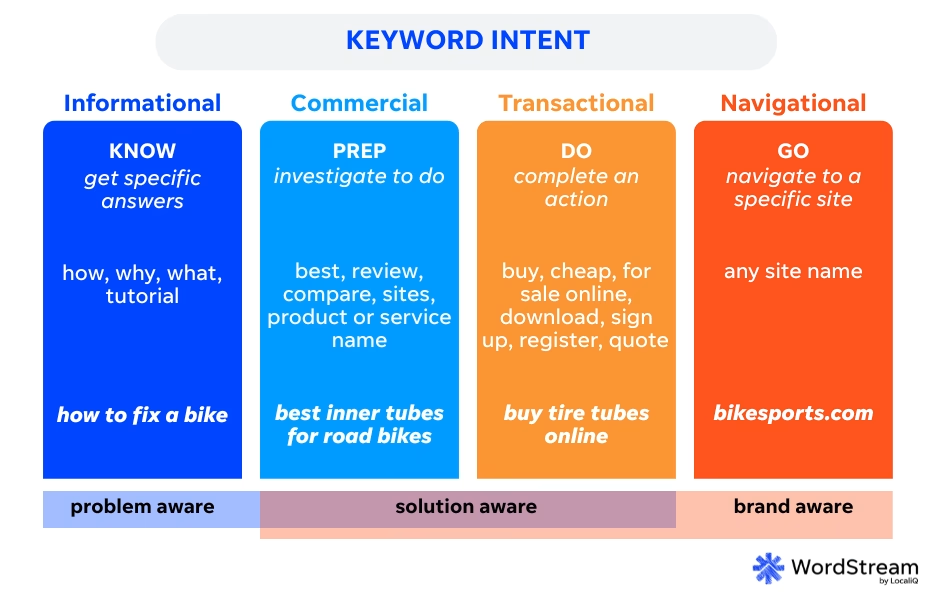
With both AIOs and PAA taking up valuable SERP space, it’s more important than ever for you to prioritize your Google rank in terms of both SEO and PPC.
With nearly half of AIO sources having a ranking lower than the top 10, this indicates that higher-ranking content won’t necessarily have a chance to pop up in an AIO.
Clearly, AIOs favor high-powered, high-authority sites—making it more difficult for smaller sites to make their way into AI-generated results.
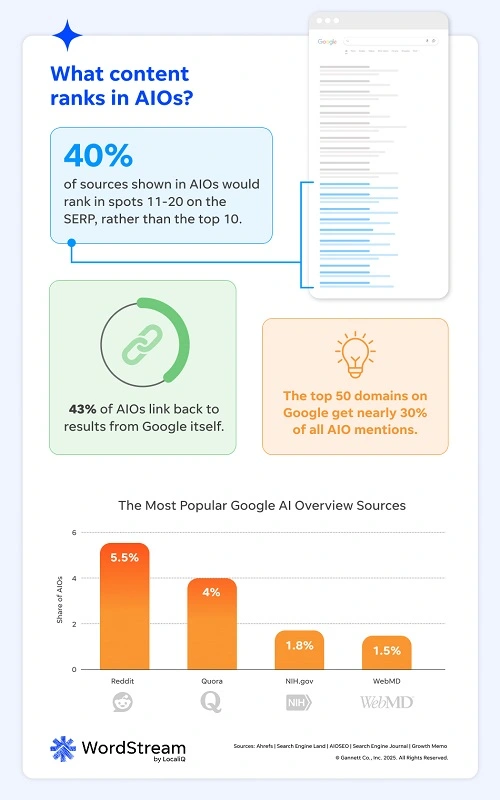
So, how often can you expect an AIO to pop up on the same SERPs your business lands on? Let’s see what the data says.
Odds are, your business is showing up alongside AI Overviews. Be sure to optimize your SEO and PPC strategies with that in mind.
This comes after the March core update from Google.
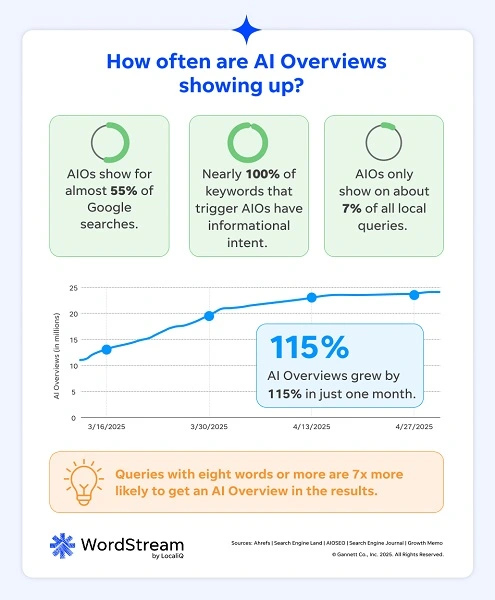
More and more keywords are able to trigger AIOs. Try using keyword tools to get ideas for keywords related to your business that are most likely to have an AIO in their results. From there, you can optimize for those keywords or try to avoid them, depending on your strategy.
🔍 Our Free Keyword Tool can help you tailor your SEO strategy with AIOs in mind!
AIOs only show on about 7% of all local queries. This aligns with other trends that have found local SEO to be relatively safe from AI and other algorithm updates.
AIOs show up less in shorter search queries and more in longer search queries. In fact, a query with eight words or more is 7x more likely to get an AI Overview in its results.
If you’re wondering how much attention your customers are paying to AIOs, you’re not alone. Here’s what we know so far in terms of consumer sentiment around AIOs, along with the impact AIOs have on user experience.
💡Ready to incorporate AI in your business’s search strategy? Download our free guide to powerful ways to use AI in Google and Facebook Ads!
The majority of Google users aren’t looking past the first third of an AIO result. In other words, they’re only reading about 30% of an AIO’s information.
This might seem contradictory, but while users may not always be reading AIOs in their entirety, many are still expanding them to, at least, see the whole result before scanning past.
In contrast, a recent AI statistics roundup found that 75% of consumers are concerned about misinformation from AI. However, 50% of consumers also report being optimistic about AI overall. So, it could be that while consumers are aware of the risk of misinformation of AI in general, they’re still open to using it to streamline their daily tasks, like conducting searches.
If your customers aren’t yet taking advantage of features like AIO, expect that to change in the coming year. You can get ahead of this predicted trend by optimizing your strategy for AIOs now.
AI Overviews take up 42% of the screen on desktop, 48% on mobile. This pushes organic results way down the page, which might be accounting for the loss in traffic many sites are reporting seeing from Google.
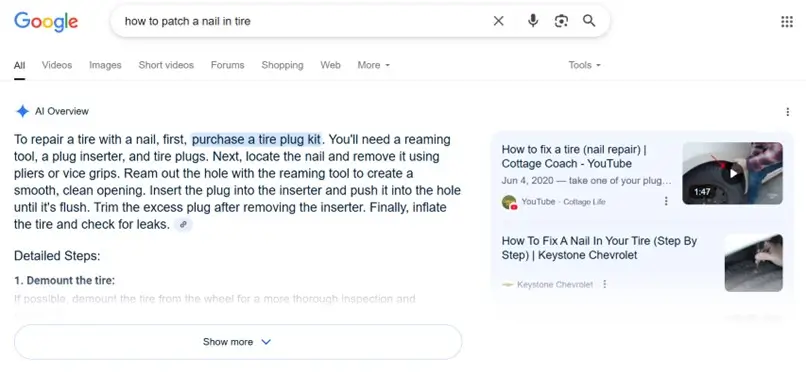
Depending on the device and display settings, AI Overviews can practically take up the whole screen!
About two-thirds of all Google searches are done on mobile devices. Now, the majority of those mobile searches are getting an AIO.
This demographic of searchers chooses AIOs as the final answer to their queries 50% of the time.
Like most things in digital marketing, there is no clear yes or no answer to this question, as AIOs vary by industry. Let’s take a closer look at how AIOs are impacting click-through rates.
In a study of over 300,000 keywords, there was a correlation between AIO presence and a 34.5% decrease in click-through rates for top-ranking pages.
Websites in the top four positions for searches using terms like what, when, where, and how saw over a 7% decrease in clickthrough rates.
Many business owners and marketers have reported seeing declines in their site traffic in light of AIOs. In the example below, one SEO expert found their traffic to be down 41% in 2024.
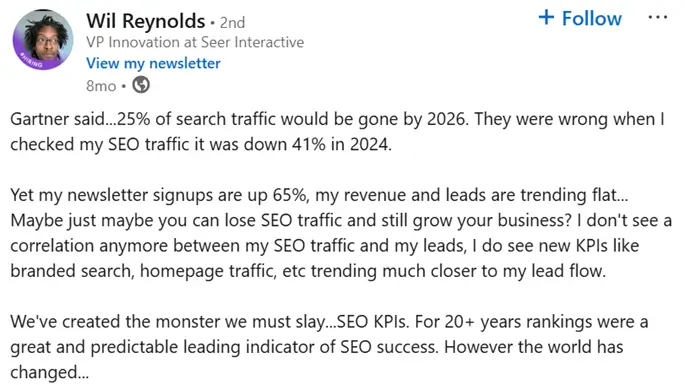
However, when a branded result shows in an AIO, CTR for that brand actually increases.
They also trigger less thumbnails and Top Stories features.
This indicates that AI Overviews could be causing users to not click off from the SERP.
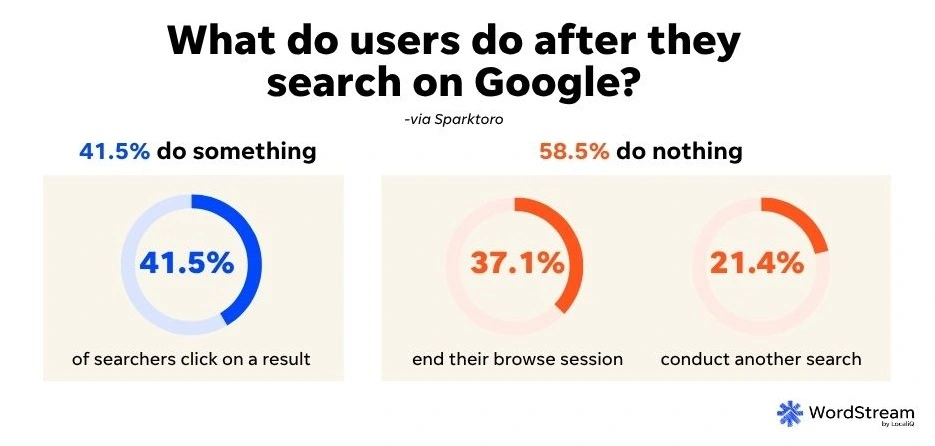
On a more positive note, business owners are now embracing AIOs as valuable ranking opportunities in 2025.
A recent study looked at data from throughout the past year and found that both paid and organic CTRs trend down when AIOs have been shown.
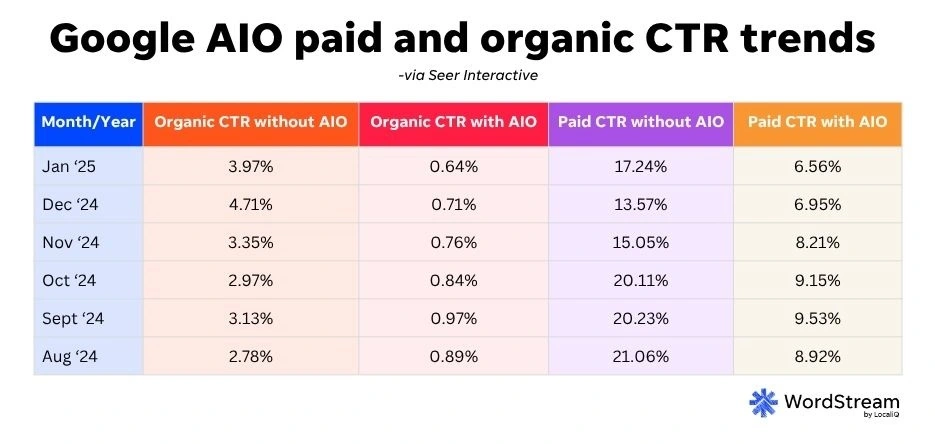
Want even more Google AIO statistics? I’ve got you covered!
AIOs appeared 32% of the time for keywords within this CPC price range. Meanwhile, more expensive keywords costing $10 or more only saw AIOs about 17% of the time.
See how much keywords might cost in your industry using our free 2025 search benchmarks report!
This likely also means that many long-tailed keywords, which are frequently favored by marketers and advertisers since they tend to have higher search intent, have an increased AIO presence in their results.
In fact, the presence of AIOs in ecommerce queries has declined—with only 4% of ecommerce searches getting AIOs, compared to 29% when AIOs first rolled out.
The presence of AIOs for B2B tech-related queries increased from 36% to now 70% of SERPs containing AIOs. This is followed by Insurance (17% to 63%) and Entertainment (2% to 37%).
This makes Reddit the most popular site sourced in AI Overviews, followed by Quora (4% AIO share), NIH.gov (1.8% AIO share), and WebMD (1.5% AIO share).
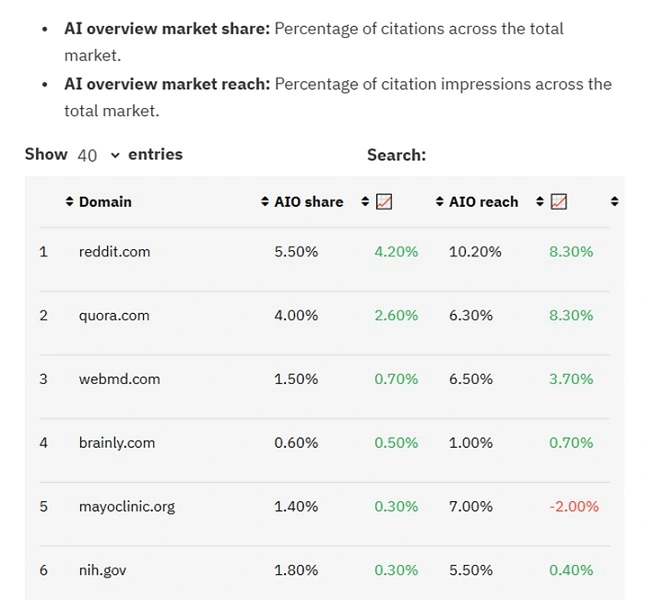
Using keyword tools to familiarize yourself with your industry’s typical keyword volume and difficulty ratings can help you gauge how frequently AIOs might show up in searches relating to your business.
The longer an AI Overview’s answer, the more sources it cites. AIOs under 600 characters cite about five sources, while those over 6,600 characters cite around 28 sources.
While there are other AI-supported search solutions emerging, Google’s AI Overviews currently has the biggest variety in the sources that it pulls.
AIO support was added for users who speak Arabic, Chinese, Malay, Urdu and more.
Here is our complete infographic of all the AI statistics and facts you need to know.

While many of the Google AI Overviews stats we reviewed were very different from one another, they all point to the search landscape changing fast. Google AIOs are reshaping the SERP (just as other generative AI tools are changing search), so it’s best to use data like the above to stay on top of current trends and ahead of your competition. Here are a few more ways Google is incorporating AI into its platform, plus answers to the most common AI and search questions. For more help maximizing your search strategy, see how our solutions can elevate your business on the SERP and beyond!
